- Deck Title: Dark Goddess Tarot
- Author/Artist: Ellen Lorenzi-Prince
- Published by: Red Feather Mind/Body/Spirit (Schiffer Publishing)
- First published: USA, October, 2020
- RRP: US$34.99 / GB£31.99
- ISBN: 978-0764360220
- Reviewed by: May M.F. Swann
Ellen Lorenzi-Prince works with the Tarot as part of her spiritual path. Since acquiring her first deck in 1985, she has been using the cards as companions on her journey to the goddess. She has created other decks previously, such as the Tarot of the Crone, the Minoan Tarot, and the Greek Goddess Tarot—each one forging a connection between Tarot and the divine feminine. She has led study groups focused on experiential, transformation-based tarot practice, favouring lived experience and intuitive exploration over rigid teaching structures. Ellen draws deeply from myth, culture, and personal ritual: her work evokes primal journeys and sacred feminine archetypes, empowering readers through shadow, initiation, and ancestral wisdom.
The Dark Goddess Tarot honours goddesses who are often seen as disturbing, fearsome, and powerful—figures that are beautiful in their defiance and intensity. These are the ones who tend to be overlooked or shunned, especially because they represent aspects that make people uncomfortable, particularly when embodied in the feminine. According to the author, this deck is meant for troubled times—not to deny pain or to glorify it, but to look at it directly, with honesty. The aim is to address what hurts with honour, and then to take meaningful action.
The art is simple and striking, using clean lines and bold colours to reflect the energy of each goddess. While minimal in detail, the images are emotionally expressive, and the style lends itself to immediate recognition and impact when a card is drawn.
The deck loosely follows the Rider-Waite-Smith system, maintaining the traditional structure of 78 cards. However, it introduces several notable changes. The Minor Arcana suits are renamed to reflect elemental associations—Wands become Fire, Cups become Water, Swords become Air, and Pentacles become Earth. The court cards are also reimagined with new titles that evoke stages of feminine power: Page becomes Amazon, Knight becomes Siren, Queen becomes Witch, and King becomes Hag.
To understand how this deck speaks and what it offers, I conducted a deck interview spread—six positions designed to uncover the voice, demands, truth, wisdom, boundaries, and gifts of the Dark Goddess Tarot.
This deck does not whisper—it speaks with the voice of inevitability. When asked who speaks through these cards, the answer came as Thyone, the 10 of Fire. From the guidebook: “You cannot stop what is happening… The only way out is through.” This deck is the raw truth that sometimes, life overwhelms. It will not sugar-coat nor rescue—but it will walk beside you in the fire and urge you forward. Its voice is the voice of survival, of perseverance. It affirms that yes, shit happens—but also that change will come, and you will rise.
In return, it demands much. The Red Dakini, 8 of Fire, reveals what the deck expects from its reader: transformation, passion, momentum. The deck does not work for the passive or the complacent. It asks the reader to move, to burn, to follow their heart even into chaos. It calls for those who are unafraid to change—or at least brave enough to try.
And how does it reveal shadow and truth? Through Aphrodite, Siren of Water—unexpected, perhaps, but revealing. Shadow is lit here not by harshness but by reflection and grace. This deck encourages you to see yourself clearly, but lovingly. Not every revelation is cruel; some are invitations to embrace your beauty, your worth, your divinity. In darkness, it offers self-compassion as a lantern.
Its wisdom strikes deepest in desire—Vesta, Ace of Fire, speaks of the elemental flame that dwells in the soul’s core. This is not surface want, but the longing that defines one’s very being. The Dark Goddess Tarot helps uncover that essential yearning and gives it voice. Its insight cuts through distraction to reveal what truly drives us—our sacred flame, our holy hunger.
The deck’s boundary is clear and fierce. Through Artemis, Amazon of Earth, it warns that this is not a tool for manipulation or petty power. Artemis protects the vulnerable and the pure—infants, animals, untouched springs. Her message is this: come with clean hands and good intent. Use the deck to protect, to heal, to defend—not to harm or dominate. The goddesses will walk beside those who honour this pact. Violate it, and you will find yourself alone in a very wild wood.
And what gift does the Dark Goddess Tarot offer those who dare to walk with it? Skadi, Amazon of Air, answers from her snow-covered heights. Goddess of winter, shadow, and fierce autonomy, Skadi teaches the power of resilience. She does not promise comfort—only strength. She shows that it is possible to endure harsh truths, survive cold awakenings, and still emerge wiser, sharper, more resolute.
Her story reminds us that independence does not mean isolation, but authenticity. The gift of this deck is the confidence to stand tall in one’s truth. It empowers the reader to claim their space, to shape their life with intention, and to remain unshaken in their self-worth—even in the face of storms.
The guidebook is highly informative, offering a brief overview of the deck’s theme and the author’s approach to the goddesses, but its primary focus is on the individual cards. Each entry spans two pages—one for a full-size illustration of the card, and one for a detailed explanation of the goddess featured and the significance of drawing her.
Descriptions often include not only the goddess’s mythological background but also suggested rituals, attitudes, or offerings—ranging from incense types to behavioural suggestions—as ways of honouring her presence.
The guidebook also contains a couple of suggested spreads to help readers get started, though these are described briefly.
In practice, I found that readings with this deck flowed more naturally when I set aside traditional tarot interpretations and engaged directly with the story, energy, and symbolism of each goddess. The guidebook supports this approach well, offering a more spiritual and mythologically immersive experience than a traditional tarot manual.
The artwork in this deck is deliberately simplistic, relying on bold colours and clean lines to evoke the emotional presence of each goddess. It is not intricate or densely detailed; rather, it focuses on distilling each figure to her essence. The emphasis is clearly on the goddess’s energy rather than decorative flourish.

In terms of inclusivity, the deck offers a wide cultural reach. Goddesses from numerous global pantheons are represented—making it diverse in a mythological and geographic sense. That said, inclusivity is limited to feminine archetypes by design, and there is little visual representation of varied body types, disabilities, or gender identities beyond the core goddess theme.
The card backs are reversible, with no visual cue indicating orientation. However, the guidebook does not address reversed meanings, leaving that decision entirely to the reader’s discretion and experience.
While the goddess illustrations are distinct and can become easily recognisable over time, they are not aligned with traditional Rider-Waite-Smith imagery. For readers accustomed to identifying cards by visual cues alone, this deck will require a more intentional approach. The title at the bottom of each card becomes essential, particularly in the Minor Arcana.
The deck comes housed in a large, beautifully designed magnetic-flap box. The packaging is sturdy and elegant, with a well-constructed insert that holds both the guidebook and the cards securely in place. The cards rest perfectly centred and are easy to retrieve. However, I found the box to be somewhat oversized for everyday use. Personally, I prefer to store the guidebook and deck separately, as one isn’t always needed when using the other.
The cards themselves are glossy and edged in gold, adding a luxurious finish. The card stock is thick and of good quality, cut to standard tarot dimensions. That said, the stiffness of the cards made them difficult to shuffle, particularly for those who prefer a riffle shuffle. I found overhand shuffling to be the only practical option with this deck.
I wasn’t initially drawn to this deck. I judged it quickly based on the artwork and didn’t expect to connect with it. But after spending time with it for this review, it grew on me. The goddesses presented are rich in personality and deeply engaging. They invite reflection and offer guidance. More than that, they serve as role models—figures to draw inspiration from, each with her own strengths and story.
Although this is a tarot deck in structure, the focus leans heavily toward the goddess featured on each card rather than on the traditional meaning of the tarot card itself. It’s not a deck I would use for conventional tarot readings. The system is familiar, but the emphasis lies elsewhere.
Because of that, I wouldn’t recommend it to beginners who are trying to learn tarot fundamentals. A traditional system like Marseille, Rider-Waite-Smith, or Thoth would be a better starting point. That said, if a beginner felt particularly drawn to this deck, it is certainly possible to learn to use it well. The guidebook is supportive and thorough.
For those interested in goddess work, spiritual exploration, or themed collections, this is a valuable addition. It feels more suitable for personal introspection than for reading for others—though that could change with deeper experience and familiarity.
It’s not a difficult deck to work with, but readers—new and experienced alike—may find themselves consulting the guidebook often at first, as the cards are interpreted more through the stories and attributes of the goddesses than through standard tarot symbolism.
Ellen Lorenzi-Prince is an author, artist, Tarot reader, and dedicated priestess of Hekate living in the Pacific Northwest. https://www.darkgoddesstarot.com
Available direct from REDFeather, or other tarot deck retailers.

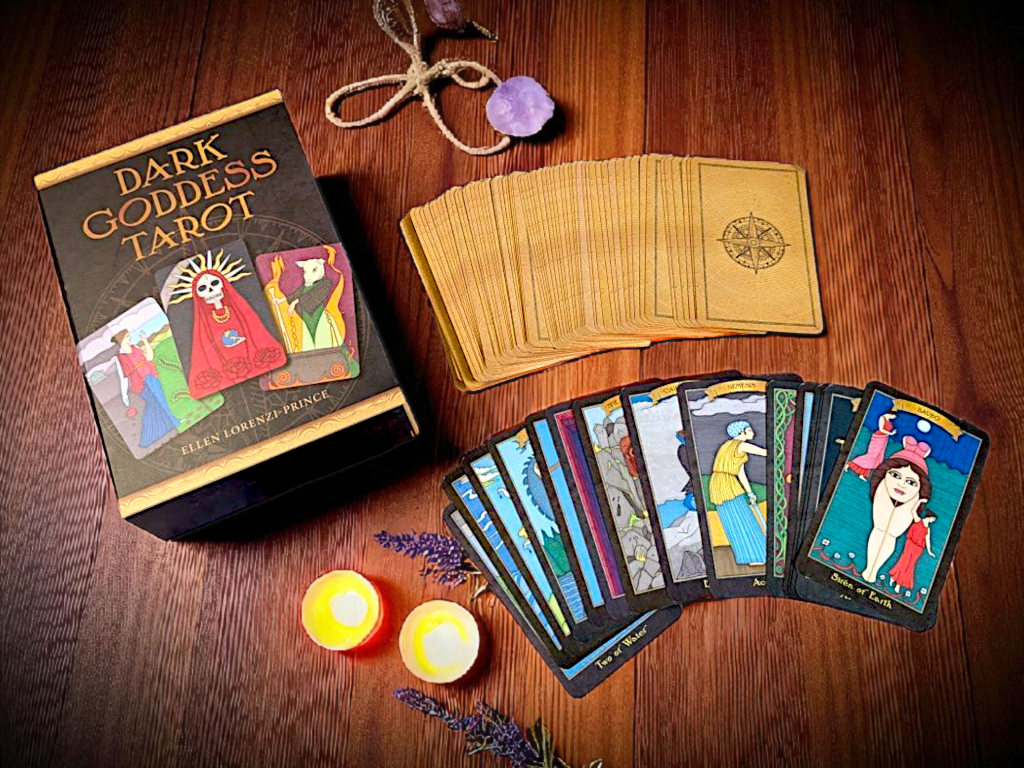
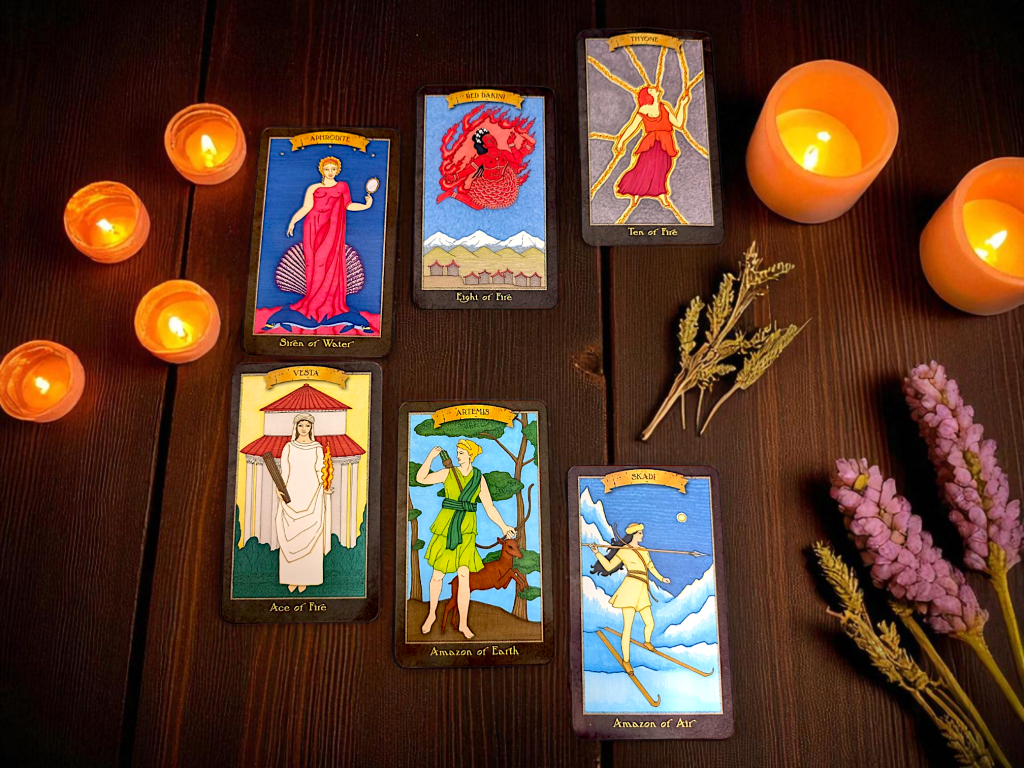
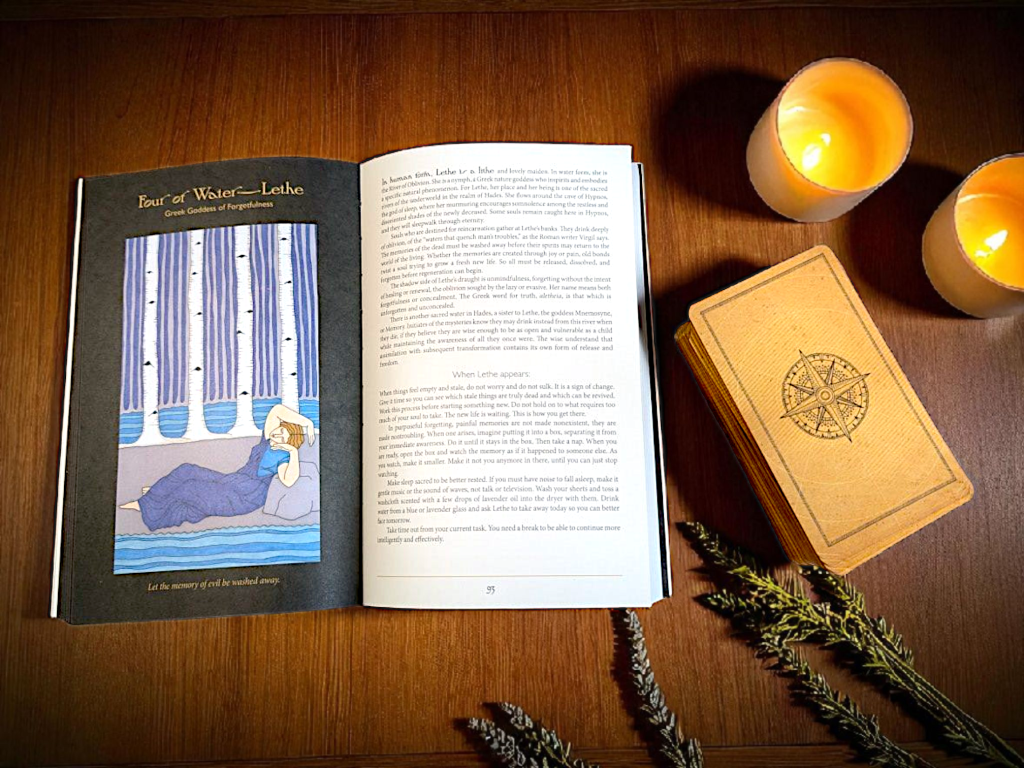
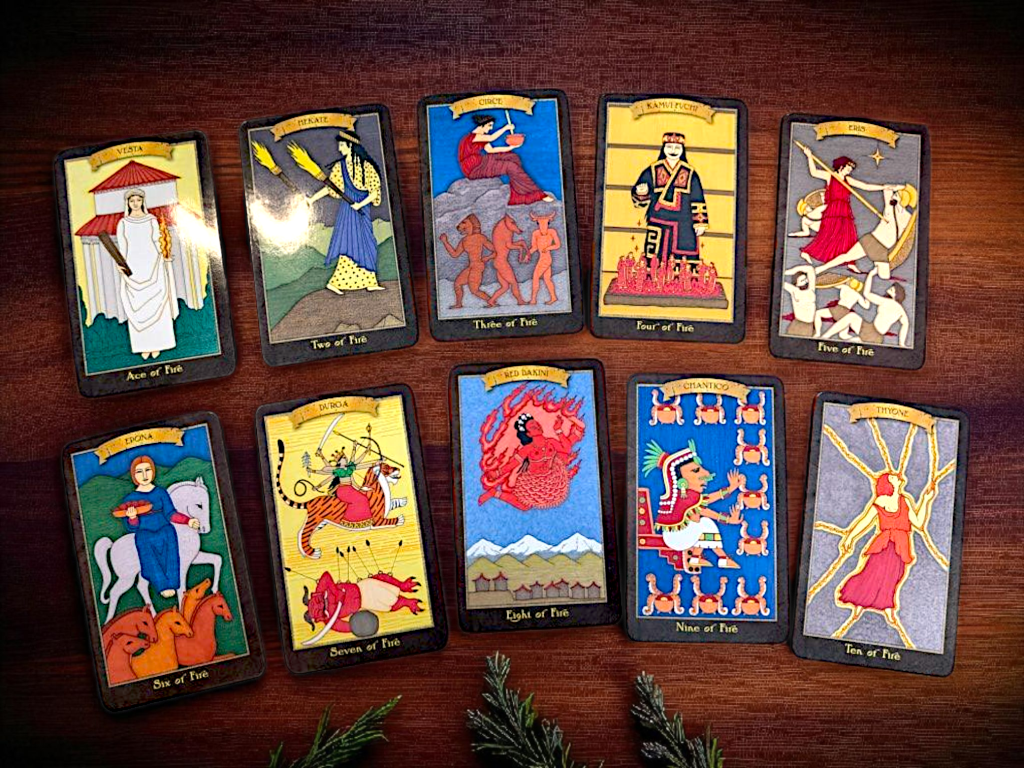
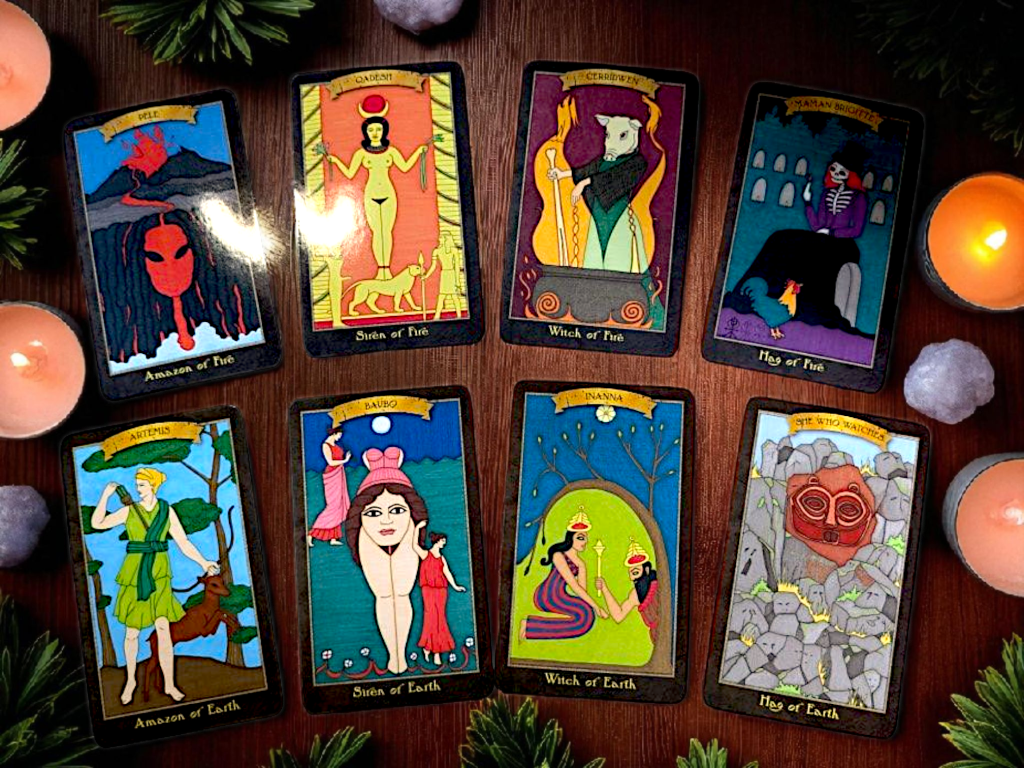
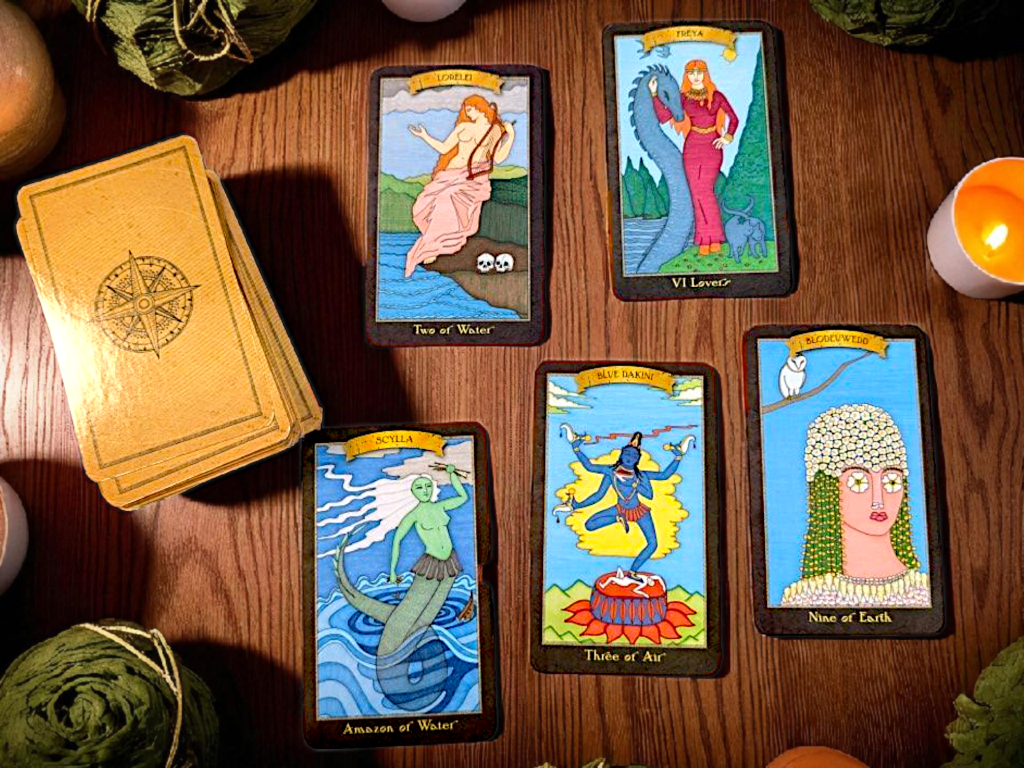
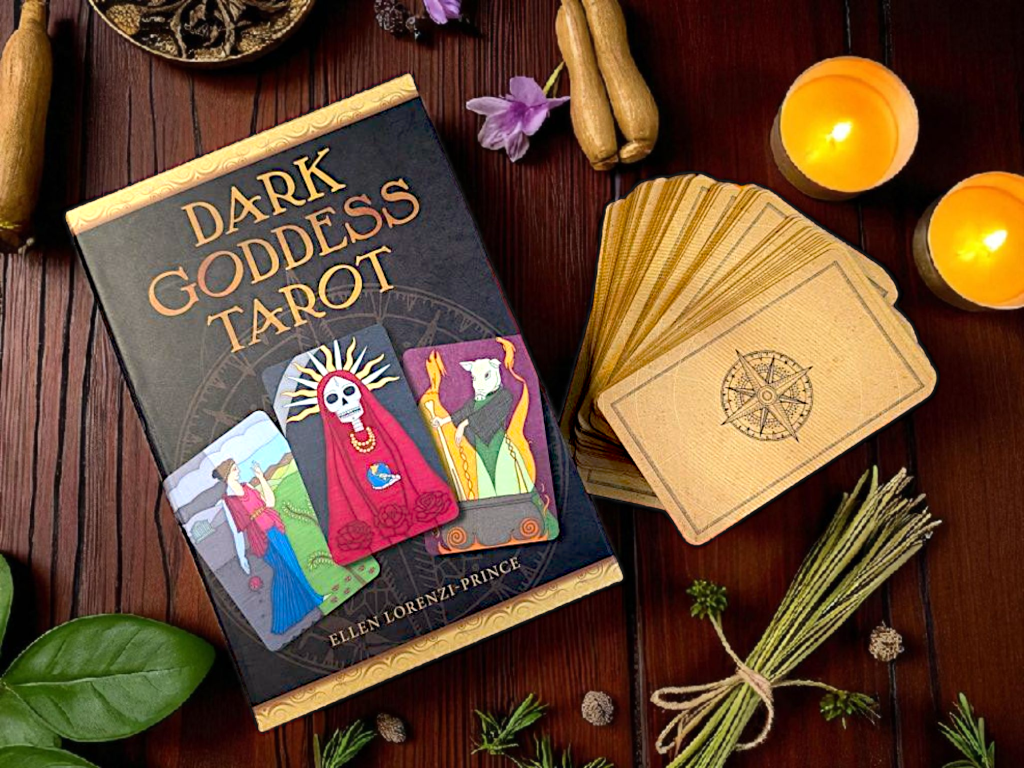
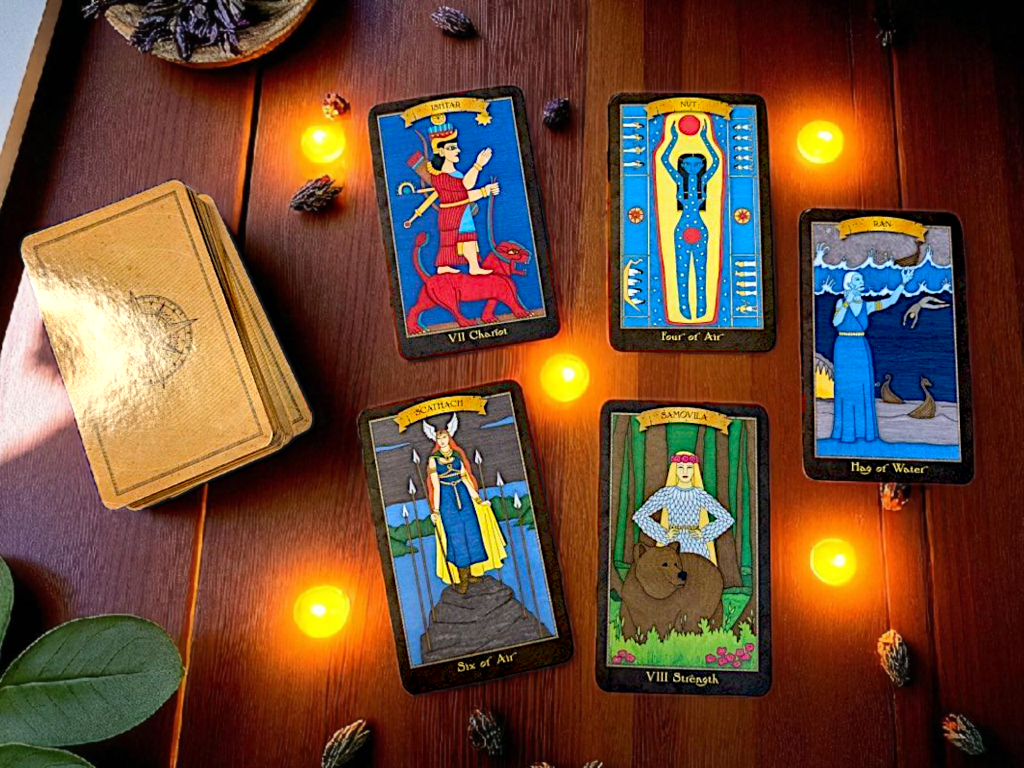




0 Comments